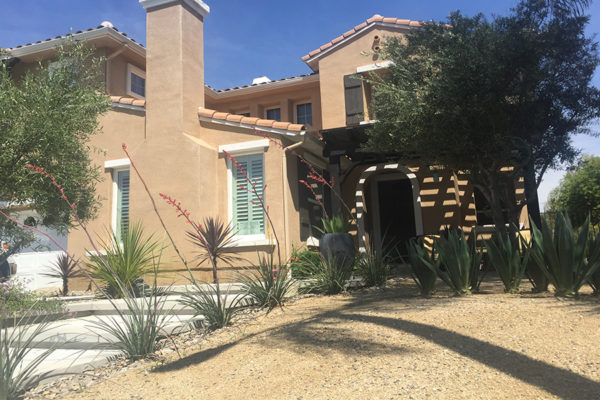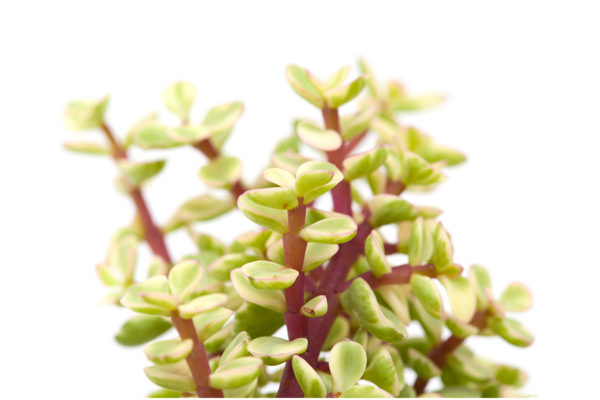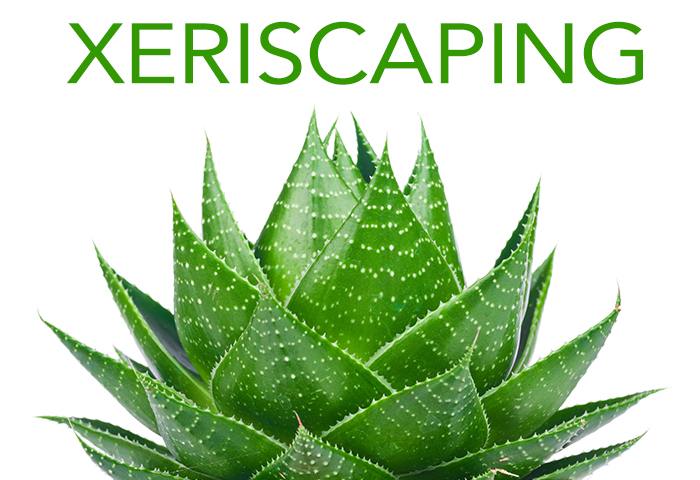Table of Contents
Xeriscape Landscaping
Water conservation is on a lot of people’s minds these days. Droughts and a growing population put stress on existing water supplies. That leads to the water restrictions that have become all too familiar to Californians. What is the issue, though? Isn’t 70% of the world is covered in water?
Yes, but only 0.007% of all that water is considered potable or safe to drink. The water from your faucet is potable water. Unfortunately, so is most of the water used in irrigation to keep a lawn green. In a desert climate, keeping lawns green means using a huge amount of potable water. To reduce their water consumption, many homeowners are looking for a landscaping alternative to big lawns. Xeriscape landscaping is that alternative.
What Is It?

Xeriscape landscaping is a landscaping approach that aims to maximize water conservation while still giving you an appealing yard. This is done with a careful combination of plant selection, plant placement, mulching and cutting back on grass lawn areas.
The ideal situation is to create a yard that doesn’t ever need you to water it. At a practical level, that’s not always possible. Choices about new plants, types of mulch, and whether to retain any existing grass will all determine to your final water needs. The odds are good that you’ll need some level of irrigation, but at a drastically reduced level.
Desert Xeriscaping
 Since desert areas are already water-starved, it’s easy to imagine xeriscaped yards in the desert are a study in cacti and gravel. Cacti are well adapted to survive in a desert and many even flower. That doesn’t make them the first or best choice for residential yards. After all, most cacti have spines. That makes them problematic for rambunctious kids and pets.
Since desert areas are already water-starved, it’s easy to imagine xeriscaped yards in the desert are a study in cacti and gravel. Cacti are well adapted to survive in a desert and many even flower. That doesn’t make them the first or best choice for residential yards. After all, most cacti have spines. That makes them problematic for rambunctious kids and pets.
Stone and gravel have a place, but probably a lot less prominent than you’d imagine. Larger stones can provide a decorative element or focal point for areas. Gravel can be used to create dry spaces between planted areas. Using gravel isn’t a requirement, it’s an artistic decision. The whole purpose is to reduce water usage, not make you hate your yard. Take a pass on gravel if the look doesn’t appeal to you.
Plant Selection
 The driving force behind plant selection is low water consumption. These plants are usually described as drought-tolerant, which actually makes plant selection trickier. Drought tolerance is relative to your region. Memphis, TN averages close to 56 inches of rain per year. Boston gets around 44 inches. Los Angeles gets around 15 inches. A drought-resistant plant for Memphis might survive in Boston, but it would die a grisly death in LA.
The driving force behind plant selection is low water consumption. These plants are usually described as drought-tolerant, which actually makes plant selection trickier. Drought tolerance is relative to your region. Memphis, TN averages close to 56 inches of rain per year. Boston gets around 44 inches. Los Angeles gets around 15 inches. A drought-resistant plant for Memphis might survive in Boston, but it would die a grisly death in LA.
For arid climates, there are two main choices for plant selection. You can select native plants that have already adapted to the climate. There are almost always more of those than people expect. The other option is to use plants that have been imported from similar climates, such as Australia, South Africa or parts of the Middle East. Exotic plants can add a lot of decorative flair to your yard, but it comes at a cost. Exotic plants are often vulnerable to native pests, which can add to your maintenance time and costs.
Plant Placement
Plant placement plays a crucial role because it allows for irrigation zones. Water needs will still vary among drought-tolerant plants. Grouping together plants with similar water needs lets you deliver very precise levels of irrigation. Plants that need less water get less water, while plants that need extra get extra. You don’t use more water than necessary anywhere in your lawn.
Creating irrigation zones isn’t just a water-saving tactic. It helps to ensure that your plant survive. Overwatering is catastrophic for any plant. It limits available oxygen, washes away vital nutrients, and causes roots to rot. It’s not quite as bad as salting the earth, but it isn’t too far behind.
Mulches
Mulches come in two varieties. There are inorganic mulches made primarily from stone. Stone mulch is highly durable, which means you won’t need to replace it. The pitfall is that it absorbs heat from sunlight, which causes evaporation from the soil beneath it. You can still use it, but only in areas with a lot of shade.
The other option is organic mulch, which is usually made from bark or wood chips. Organic mulch doesn’t retain heat like inorganic mulch, which makes it a good way to prevent evaporation from the soil. The organic mulch also decomposes over time. That might sound like a bad thing, but it actually improves soil quality in a number of ways.
Benefits
The most obvious benefit is reduced water use. That takes a bit of pressure off the public water system and makes more water available for critical uses. Furthermore, It has the knock on effect of cutting your water bill. Depending on the size of your lawn, it might cut your bill by quite a bit.
Xeriscaped yards also require substantially less maintenance. You’ll need to do some occasional weeding. Organic mulches need to be refreshed periodically. Pruning once or twice a year will keep the plants healthy. All in all, though, it is way less time and effort than mowing and trimming a lawn every other week. If you hire out your yard maintenance, you’ll be able to reduce the frequency of those visits and save a bit of money there as well.
We Do Xeriscape landscaping
Patiocovered.com offers Xeriscape landscaping. We can transform your yard into a desert oasis and we also offer beautiful patio covers. Just ask how.



